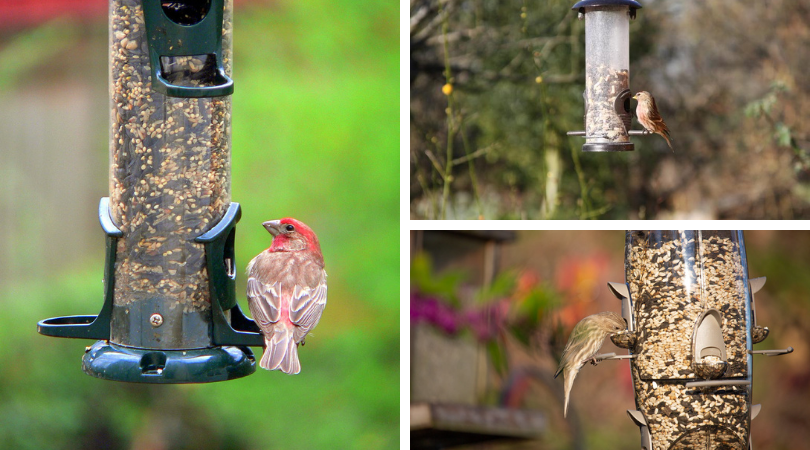| Many of us enjoy watching birds in our backyard and love providing food to our feathered friends through bird feeders. However, there is a down side to feeding birds. More than 40% of people in the United States regularly feed birds. Scientific studies have determined that whether intentional (bird feeders) or not (landfills or loose garbage), feeding birds increases the risk of spreading an infectious disease. Providing food for birds brings them together in larger groups more often than what is normal, making it easier for diseases to spread. Early in 2021, Washington state residents were asked by the Washington Department of Fish and Wildlife (WDFW) to remove their bird feeders to help limit the spread of a deathly disease spreading among finch and other songbird species. Beginning this past April, backyard bird feeders were once again acceptable to put out. However, there are recommendations on best practices for feeding birds. The type of feeder matters. It is recommended to use tube feeders or similar styles that allow birds to have their own perch. For folks who have multiple feeders in their yard, make sure your feeders are spaced apart. The goal is to further disperse birds by creating space while they feed. It is best to clean bird feeders daily when there is a virus outbreak so be sure to properly clean and sanitize your feeders. Even if there is not a virus outbreak in your area, be diligent about cleaning and sanitizing your bird feeders just in case. It is best to clean feeders at least twice a month, ideally once a week. If you do find a dead or sick bird near your feeder, take the feeder down immediately and thoroughly clean it. Report sick or dead birds to the Washington Department of Fish & Wildlife. |
 |
| Choosing the right kind of food source for your feeder depends on which bird species you are trying to attract and feed. For example, black oiled sunflower is favored by many types of birds including chickadees, finch, and nuthatches. Millet is a favorite food among ground-feeding birds and is often included in many birdseed mixes. No matter what you put out for the birds make sure that you don’t put out too much, most seed and suet can mildew and go bad with the presence of moisture. Never feed birds baked goods like bread as it provides little nutritional value and can mold easily causing birds to get sick. Although most of us love seeing birds in our backyard, majority of the time bird feeders are not necessary. Fostering a wildlife friendly backyard habitat can be just as good, if not better, than a bird feeder. If you are going to use bird feeders, the best time to put feeders out is when birds need the food the most. For example, when temperatures are extreme, before migration, and in late winter or early spring when seeds and other food sources are low. By mid-spring and into summer, birds are raising their young and tend to focus on finding high protein food sources like insects instead of seed. Creating insect friendly habitat and avoiding the use of pesticides can also help supply the birds with an appropriate food source. Also remember that it is important that newly fledge birds learn how to forage without the help of human feeders. |
Cleaning & Sanitizing Feeders: All About Birds
Sick & Dead Bird Reporting: WDFW’s Online Reporting Tool
Disease Outbreak News: WDFW


Recent Comments